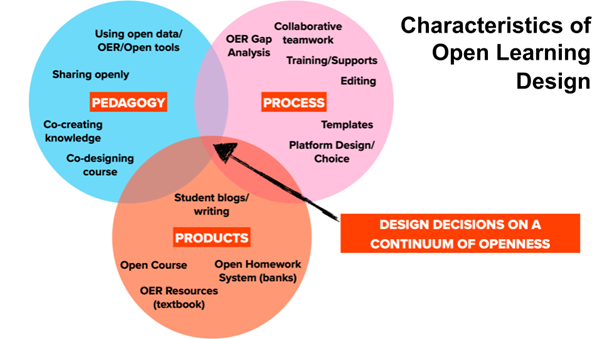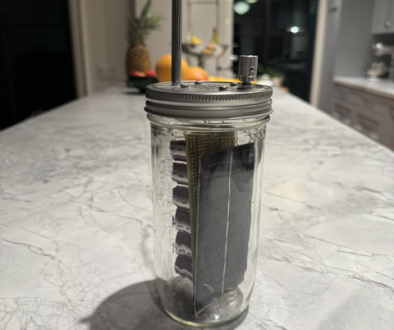Leveraging Speculative Design for Transformative Organizational Change in Higher Education
Authors:
- Kristen Ferris , The University of New Mexico
- Vanessa Svihla, The University of New Mexico
- Susannah Davis, The University of New Mexico
- Nadia Kellam, The Arizona State University
In the ever-evolving landscape of higher education, the pursuit of diversity, equity, inclusion, and justice (DEIJ) remains a formidable challenge. Despite the earnest efforts of change agents, organizational transformations often stumble upon complex barriers rooted in entrenched power dynamics. Amidst these challenges, we use speculative design narratives, which intentionally critique the present, to build commitment to making change even when faced with challenges and barriers. Speculative design is often used as a design practice aimed at exploring and questioning potential futures (Dunne & Raby, 2013).
We created a Community of Transformation (CoT) comprising change agents from STEM departments across various institutional change leadership teams, drawing on speculative design, remixing, and futurisms to foster DEIJ-oriented systems change within higher education. Our aim was not only to sustain commitment, but also to cultivate a collective vision of a more equitable future. We define speculative design, remixing, and futurisms as follows:
- Speculative design: an approach that challenges conventional narratives and imagines alternative futures (Dunne & Raby, 2013).
- Remixing: the practice of taking what exists and refarming and changing it to construct new meanings and narratives (Dando, 2019).
- Futurisms: a way to imagine past, present, or future situations that challenge current paradigms and inspire transformative thinking and radical hope (Winchester, 2018).
Central to our methodology is the concept of speculative design. We argue speculative design is an important tool, enabling change agents to sustain commitment and develop more just visions as they lead institutional change efforts. We propose that integrating design approaches of art and rest into speculative design will support our CoT members as they face institutional and societal barriers to advancing DEIJ. Utilizing Hersey’s (2022) social-justice-based work on rest as resistance allows our CoT to challenge norms about what it means to be free versus part of systemic inequities.
As we planned our CoT activities, predominantly conducted in virtual spaces, our goals were to excite participants about engaging in the community, build a sense of belonging, and demonstrate that our CoT would differ from typical academic communities through its focus on arts and storycrafting. Important to our design approach was ensuring that activities were flexible enough to apply to different contexts while still maintaining their core purpose to expand potential just futures envisioned by our participants.
Activities have included the creation of zines to chronicle change projects and the exploration of Africanfuturist science fiction. Each activity introduces community members to diverse materials, both in terms of representation and inclusivity and in terms of media. We anticipated and indeed received feedback indicating that some members were uncomfortable with the arts-based activities, feeling them unproductive or simply out of their comfort zones. To address skepticism about and discomfort with artistic endeavors, we designed a structured template outlining the purpose, execution, and inspiration for each activity, shared at the start of each meeting. These virtual arts-based activities provided opportunities for members to explore new modes of expression and cultivate resilience in the face of adversity.
Activities for Building a Collective
Zines (small magazines made by folding a single sheet of paper) were one of the first artistic endeavors members of our CoT participated in. Zines cover a wide range of topics and are often handmade and self-published, incorporating various creative elements. The concept of zines was chosen as an avenue for members to express who they were as we began to build trust as a community. Zines were selected because of their historic significance as a medium for people from marginalized communities who seek alternative media forms outside mainstream channels to share ideas creatively. In this activity we asked members to push themselves out of their comfort zone, as this is something students often do during their own growth and learning. Below are some examples of the zines created and reflections from participants.
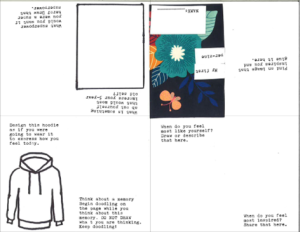
Figure 1. Copy of zine template
Trading cards are small cards people create to represent who they are. In our case, community members created harbinger trading cards to help them position themselves as bringers of DEIJ change. They are the size of baseball cards and include two sides. On the front, members depicted their DEIJ change work. On the back, they included information such as their name and a motto or idea related to their change project. Harbinger trading cards were designed to prompt members to begin storycrafting and to reflect on their roles as DEIJ change agents.
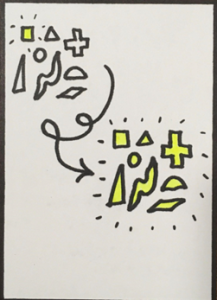
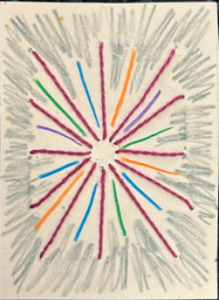
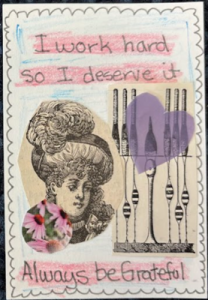
Figure 2. Sampling of Harbinger Trading Cards (front)
We designed a renga poem activity to further build the sense of being part of a collective community of transformation. Traditionally, this Japanese poetry genre is written by a group of poets, each following set rules regarding stanza length. We asked members to focus on what positioned them as ready to make DEIJ change in academia or on futures made possible because of such changes, using an alternating structure of stanzas of 5-7-5 and 7-7 syllables. The renga served as a metaphor and evidence that even if our individual contributions feel smaller or less developed, collectively, they form a compelling and rich vision of DEIJ change.
Flames of Unity: CONVERGing for Change
| Sick of it. Sick of
it. Sick of it. Sick of it. We can do better, I hope! Radically different Creating a new future Culture matters most When inspiration is needed Creativity follows Move queerly to agitate A changeful academy Belonging matters That is why we need to change So everyone belongs Just learning environments Uplift and empower us I stand from inside The new paradigm of hope And love and respect. Freedom to learn from my space To grow and thrive in our space When we are ready We are together as one With our own richness Ev’ry student has a place To get support, grow, and learn Institutional, Structural power, I wield With hope, love, and grace Palm in palm here invited We stride forward united |
Change will happen here
When we listen to others And value what’s said Dignity, sovereign justice. Community together Why wait? Make it now Time will pass on regardless Everyday is a chance Different wavelengths. Without A distortion. Amplified. We know many people We have influence, and now Is the time to change Osmotic pressures balanced Easily we all exchange Winds of change do blow, Gathering strength from our roots, Kindling hearts aglow. Ready for creative range Let’s experience great change Gathering our dreams, Kindling flames of unity, Hope for what can be. Everyone is thriving now No matter who they are Gather ’round the fire, Kindle sparks of new ideas, Radical hope burns. Collaborate and cherish Sustainable life and earth |
Figure 3. Collective renga poem
We designed an activity around the idea that relatively simple shapes can communicate big ideas. In the shape of change activity, members quickly sketched two shapes, one representing oppression and the other representing liberation. By collecting and assembling everyone’s shapes into a collective piece of art, we aimed to strengthen our collective sense of community. The activity is a metaphor: each shape, on its own, is unlikely to seem like art or even to communicate much. Even when paired with its antidote, two shapes can be meager, thin. However, as a collective, they offer complexity, variability and a sense of being part of a larger whole.
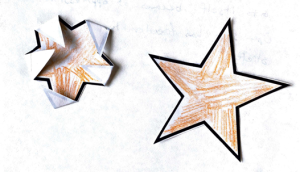
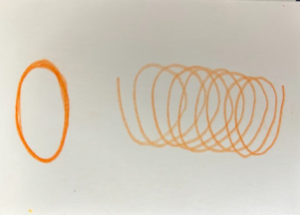
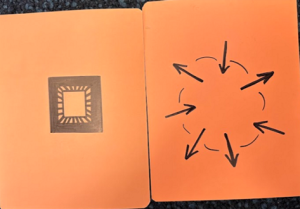
Figure 4. Sample from Shape of Change activity
Reflections and Advice for Organizers
Of course, our journey has not been without its share of challenges. First, for some, the notion of embracing art and rest activities was at odds with traditional notions of productivity. While we attempted to frame our efforts and link our strategies to notions of Tricia Hersey’s “Rest is Resistance,” some participants rejected the activities as not productive. Yet, we firmly believe that these creative endeavors are essential in envisioning changes that lead to inclusive environments. Second, after some heated conversations as well as off-topic comments, we recognized an emergent need to establish community-held norms that would keep the discussion deep and focused:
- Keep the focus. Treat this as a sacred space focused on our change projects and the specific topic at hand
- Listen actively, reflect before you speak
- Provide space for others to contribute
- It’s okay to seek advice, but be cautious about giving unsolicited advice
- Share honestly and speak from the “I” perspective
Setting clear discussion norms has been key to creating a space for sharing thoughts and struggles in a forthright manner. Confidentiality and safety in expression were crucial components of our discussion norms. A community member later summarized this as “stories stay, learning leaves,” meaning that the particular stories people share need to stay within the group, but more generalizable learnings from those stories can be shared beyond the group.
As we continue our path toward transformative change, we remain committed to leveraging speculative design as a catalyst for progress. We are intentional about including the work of BIPOC scholars and artists in our discussions. Our design team, primarily composed of white women, works to center BIPOC scholars and artists and leverage their experiences to support collaborative change. For instance, we highlighted Indigenous and Black scholars through activities based on Tachine and Thomas’ work, “Early Dawn Toward Imagining Worlds,” and focused media club meetings on Tricia Hersey’s “Rest is Resistance.” We have actively sought Black and Indigenous collaborators to further develop our CoT and its activities, ensuring inclusivity and diverse perspectives in our initiatives. Additionally, we will continue to recruit new members from a broad range of organizations who add to the diversity of our community in terms of race, gender, sexuality, (dis)ability, and other social identities. Through collaboration with a purposefully cultivated diverse community, utilizing creativity, and sharing a vision of a more just future, we believe that higher education can become a beacon of equity and inclusion for all. We offer a few practical suggestions to incorporate our goals and activities into different contexts:
We used zines to foster community connections, share personal insights, and encourage self-reflection. You can replicate this approach with a new or existing group, emphasizing identity and self-expression.
- This activity may feel short or even frivolous, so be sure to provide context on the goal of the activity and remind participants that discomfort is sometimes felt when we are learning and growing.
- If working with people uncomfortable with artistic expression, remind them that students/colleagues often feel discomfort when doing something new in class/work.
- Consider utilizing online platforms or software tools that allow for zine creation like Canva or Google Slides.
- These zines could be created collaboratively or individually and would be easily shared among virtual participants.
- For example, participants involved in a change project could come back to their zines and add to them as they work through the project, in the end having a document that tells the change story.
- Digital zines could be taken one step further by including interactive elements where items can be clicked on or videos can play within a zine page. This would allow community members to engage with content in different ways.
Trading cards are easy to create and can be fun to share. The cards were a way for us to foster a sense of who team members were individually and who we were as a collective. They can be used in many ways—be creative!
- For example, in a group of first year faculty, you can have each person create a card that expresses their teaching philosophy.
- You can use trading cards as a way to get to know students on an individual level by asking them to create a card that tells the story of how they got their name.
- Digital trading cards can be used in a virtual environment and may even include clickable features.
We believe many of our activities can be adapted to suit various educational, work, and community contexts. We hope these different approaches will help foster creativity, collaboration, critical thinking and will help everyone envision and enact DEIJ initiatives in higher education and beyond.
References
Dando, M. B., Holbert, N., & Correa, I. (2019). Remixing Wakanda: Envisioning critical afrofuturist design pedagogies. ACM International Conference Proceeding Series, 156–159.
Dunne, A., & Raby, F. (2013). Speculative Everything: Design, Fiction, and Social Dreaming. The MIT Press.
Hersey, T. (2022). Rest is resistance: a manifesto. Little, Brown Spark.
Winchester, W. W., Al-Jaroodi, J., & Carlsen, R. W. (2018). Afrofuturism: Catalyzing a pathway to more inclusive engineering design. CoNECD 2018 – Collaborative Network for Engineering and Computing Diversity Conference.


